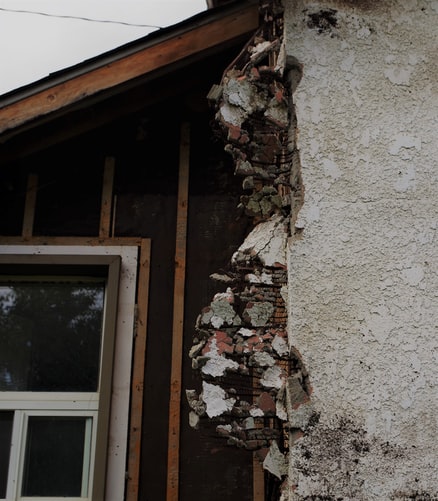Mesothelioma is primarily caused by exposure to asbestos.
Roughly 80% of patients with mesothelioma were previously exposed to asbestos. Malignant mesothelioma, which leads to irreversible cell damage, develops when asbestos fibers are inhaled.
How Can You Get Mesothelioma?
Inhaling asbestos fibers causes mesothelioma. When this happens, the asbestos fibers can get into the patient’s lungs and abdomen, thereby lodging in the mesothelium. This is a protective membrane that serves to cover the internal organs.
Since asbestos fibers cause scarring and inflammation on the cells and alter DNA, it often leads to mesothelioma. This results in the growth of tumors that can develop for decades well after the patient has been exposed to asbestos.
There are other types of mesothelioma that can occur in the body, as well. This happens when asbestos fibers travel to other areas of the body.
One example of this is pleural mesothelioma, where the pleura, or lining of the lungs, are affected by asbestos fibers. When asbestos fibers lodge in the pleura, pleural mesothelioma develops.
Another example is peritoneal mesothelioma which develops when asbestos fibers become deposited in the lining of the abdominal cavity, known as the peritoneum.
While mesothelioma remained largely unknown throughout history, it was eventually discovered in the 20th century as a result of industries growing their use of asbestos.

Mesothelioma Risk Factors
Most patients with mesothelioma developed cancer as a result of working conventional, blue-collar jobs or even serving in the military. Due to the rising, widespread use of asbestos, about 80% of those diagnosed with mesothelioma had previously been in contact with asbestos.
Primary Risk Factors
The following risk factors are some of the most common instances resulting in mesothelioma:
- High-risk occupation, such as a construction or industrial worker
- Serving in facilities containing or built with asbestos products
- Renovating a home or business built with asbestos products
- Living in an area located near an asbestos mine
- Living near a site contaminated with asbestos
- Employed at an asbestos-processing plant
- Employed at an asbestos mine
- Serving aboard military ships

Occupational Exposure to Asbestos
The number one risk factor attributed to mesothelioma is occupational exposure to asbestos.
Those working in construction or demolition are the most at risk due to the widespread use of asbestos prior to the 1980s.
To this day, there is still a considerable amount of asbestos in buildings and homes.
Firefighters are also at high risk of coming into contact with asbestos for similar reasons. Whenever fires or other disasters destroy a building constructed using asbestos products, firefighters and other first responders are at serious risk of inhaling asbestos fibers.
Those working in shipyards, power plants, and similar industries are equally at risk due to the use of asbestos products in these industries.
Environmental Exposure
Asbestos is naturally found in the form of large deposits of mineral groups.
Those who live in areas that are mountainous or hilly could be at risk of inhaling asbestos.
Furthermore, if asbestos mixes in with local water sources, residential wells can become contaminated, thus endangering the drinking supply. If asbestos comes into contact with bodies of water, the natural evaporation of the water can result in airborne asbestos fibers.
When this happens, asbestos can travel for several miles, endangering residents living in nearby areas.
Gender
Studies have shown that men are more likely to develop mesothelioma than women, although it is still unknown if genetics play a role in this. It is believed that this is primarily attributed to men working in the various fields that used asbestos.
Additionally, patients with mutations in the tumor-suppressor gene BAP1 are more likely to develop mesothelioma after being exposed to asbestos.
Age
Although the average age of patients diagnosed with mesothelioma is 69, there is no correlation to age affecting the likelihood of developing the cancer. Mesothelioma has a long latency period, typically taking anywhere between 20 and 50 years to form after exposure to asbestos. This is why it is mostly found among the elderly.
Lifestyle
It is believed that patients who practice a healthy lifestyle will have fewer side effects from mesothelioma treatment. Good sleep quality and a healthy diet are thought to play a role in improving mesothelioma.

Although lifestyle doesn’t prevent someone from developing mesothelioma, it can increase the chances of survival and improve the effects of treatment, while contributing to better overall health.
Can Smoking Increase Mesothelioma?
Smoking does not increase a patient’s risk of developing mesothelioma. If, however, a smoker comes into contact with asbestos, they are at risk of developing both lung cancer and mesothelioma.
Smoking tobacco damages the parts of the lungs that help to remove debris and assist in airflow. Without healthy lung function, cellular waste and asbestos can accumulate, resulting in decreased oxygen and damage to the cells. This can eventually lead to mesothelioma and other cancers.
Where Does Exposure to Asbestos Occur?
Exposure to asbestos usually occurs in a workplace setting, although it can also happen in nature or at home. Since asbestos was used in building material like insulation, drywall, tiles, shingles, and more, both workers and residents are at risk of exposure.
Anyone who came into contact with these building materials could have inhaled asbestos fibers. Today, the removal of asbestos is highly regulated. A business that ignores these rules will be fined by the government.

Preventing Mesothelioma
The single most effective way to prevent mesothelioma is to ensure that you are following proper safety regulations in the workplace.
 Rae Steinbach
Rae Steinbach